Pindi Memoirs by a Sikh Son of the Soil -3
Category:
Tags:
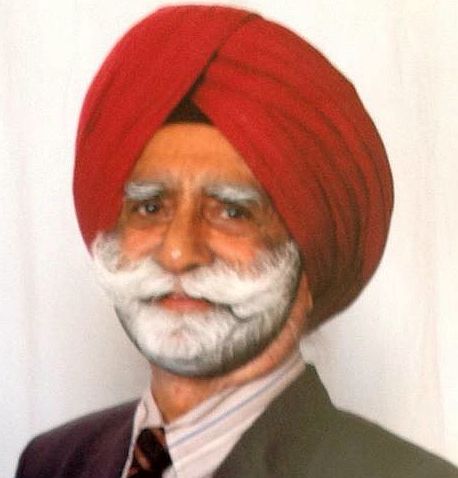
Kanwarjit Singh Malik was born in Rawalpindi in 1930. His family moved to India at the time of Partition in 1947. He joined the Flying Club in Jalandhar, and was later selected by the Indian Air Force. After the retirement from the Air Force, he served as a senior captain in Air India and Air Lanka. He got married in 1961, In 2011, when they were living in Chandigarh, his wife fell ill, and passed away in spite of the best available medical aid. Then, his daughters, who live in Dubai, California and Hong Kong, requested him to move back to his old flat in Mumbai, as it was easier for them to visit him there. He has started writing a book titled From Khyber to Kanyakumari and Beyond, which will be about his work experiences and tourist experiences in various countries.
Editor's note: This is a slightly edited version of an article that originally appeared at http://nativepakistan.com/pindi-memoirs-by-a-sikh-son-of-the-soil-part-3-rawalpindi-blog/, and is reproduced here with the author's permission.Part 1 is available here, and Part 2 is available here.
There were two small bungalows near Asghar Mall Road, Rawalpindi. One near Sanatan Dharam High School. Bhagat Lachman Singh, an old man (I think he was my grandfather's age) and a relative lived in one of the bungalows. Another bungalow on the right hand side of Asghar Mall Road belonged to my bhua (Phupho\; father's sister) in which Sardar Sangat Singh, a relative, used to live.
On Saidpur Road, towards Banni on the right hand side was Sarai Boota Singh, which was a landmark building. At one time, it housed Sardar Boota Singh, one of the big contractors and our relative. His grand-daughters were married to my father's three cousins.
Sardar Uttam Singh Duggal's sister used to live across that bungalow. Further up were two or three bungalows, and a small, covered canal which used to go towards Khalsa High School. Thereafter, it used to go towards the Water Works. There were two other bungalows and a depression with a Pull (bridge) on the road.
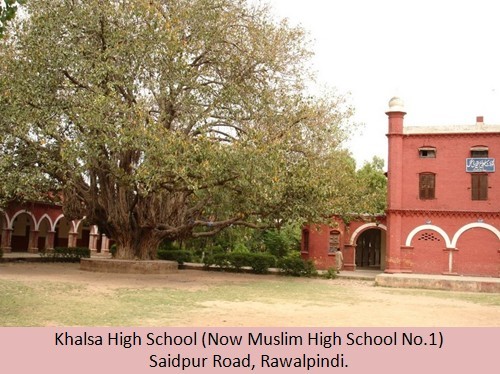
At the corner of Murree Road, there was a big bungalow. I don't know who owned that. From Murree Road Chowk, one road went to Chaklala, where the airport was located. During the war, many old aircraft used to drop parachutes, and sometimes we used to see some aircraft pulling drones behind them, and dropping troops and materials with parachutes.
On Murree Road, going towards Saddar (Cantonment), was Holy Family Hospital, then DAV College (off Murree Road), then Gordon College (off Murree Road), where the road joined Company Bagh Road (Now Liaquat Road). The Kothi of Bhagat Lachmi Das, a relative and one of the leading lawyers of Rawalpindi, was located across Company Bagh (now Liaquat Bagh). The bungalow of Dr. Leela (a well-known doctor of Rawalpindi) was also located on Company Bagh Road, along with three other bungalows owned by Hindu and Sikh families. Company Bagh had a cricket ground. The best shop for foreign goods in whole of Pindi and Saddar, Kirpa Ram's, was also on Company Bagh Road.
After the intersection of Company Bagh Road and Murree Road, at a distance was Islamia School with a very imposing building. Then Lei Bridge, across which was the Saddar area. The Rawalpindi Cantonment was the second best in India\; it was the headquarters of the Northern Command. Some of the elite bungalows, hotels, cafes, billiard rooms and other entertainment were located there, and also the Flashman's Hotel. The Tommies (British soldiers) used to stay in Lalkurti, a locality in Cantonment area.
Once or twice, I saw parades of Gora Paltans (British platoons) with Scottish Highlanders in their kilts, and bands of various regiments playing and marching along the parade. It was very fascinating to watch so many people in uniform and in step with the band.
My uncle owned the Mall Hotel, and lived close by. I remember seeing him plying his gig (carriage) with an abandoned racehorse. I also saw another gig with a Muslim gentleman plying with a zebra on the Mall Road. In the Cantonment, there was a Markeet (market), renamed as Kamran Market after Partition. There were many shops selling meat, beef, fish, and all kinds of sausages, etc. One could get anything one liked.
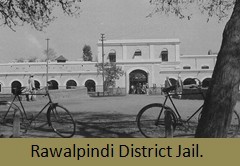
From the Cantonment, the road led to Katcharian (Courts) and the Central Jail. Like a dream, I remember I went there once with my father in a tonga when we were staying at Nehru Road.
My father was Treasurer of Rawalpindi District. The District's Chief Munshi (accountant), serving under my father, was Ganda Singh Ji, and there were sub-munshis of Gujar Khan, Murree, etc. Munshi Ganda Singh used to come around 7th or 8th of every month, and give Rs. 800 (Ed. A large sum of money in those days) to my mother, with which she used to run the house. Petrol was Rupee 1 and 4 annas (16 annas = 1 rupee) per gallon. Asli ghee was Rs. 14 for a tin. Eggs were two annas a dozen, and bananas were eight annas per dozen. Gold was Rs. 22 per tola (about 10 grams).
Rawalpindi was the hub of fruit and dry fruits coming from Kashmir, rest of India, Afghanistan and Iran.
In winter, the rains used to be in a jhari (drizzle). Once in about 10 years, we also had snow, which used to melt within an hour or two.
Winter was so cold that we used to wear overcoats and gloves. The roadside dust was chikni (slippery), and it was impossible to walk on katcha roads, as the shoes used to get stuck.
We urchins would sometimes go to Telli Mohalla (neighbourhood) to get latoos (spinning tops) made by the kharadiyas. Apart from making lattoos, they were excellent kharad workers, making different kinds of goods. They were all Muslims.
They (Muslims) were also very good mechanics, and very good in other trades. We used to have many kite flying competitions and lattoo competitions. We had marble competitions with our many Muslim friends. I remember the names of only Khalqa, who was from a nearby village, and Mushtaq and Maqsood and their families near the Water Works.
Some of these things I remember very well, others are like a dream. In front of Rose Cinema, Fawara Chowk, Raja Bazaar, there was a rehri (pushcart) selling eggs which was a favourite of many people during the movie's interval, enjoyed with masala. Another delicacy was Pindi Choley, Aloo Kulchey, a specialty and bai roti. Wangi wala bhaiya used to sell dry channa, rewarian, murunda pati, and all kinds of birds and animals made of sugar. Another man used to come, making noise with a funny whistle on a thick stick with so many kinds of coloured candies.
We owned nine shops on the Mall Road, which were all rented out. One of the shops had a petrol pump.
In summer, we either spent some time in Lahore with our father, or went to Murree to live in kothis (bungalows) at Kashmir Point. Our munshi used to go and hire the bungalow for the season (1st April to 31st October). The whole area of Murree and the surrounding hills were covered with pine trees, the pine cones of which were used for the fireplaces. They gave out a wonderful aroma. The view from there of snow-covered hills and peaks was breath-taking.
On our journey from Rawalpindi to Murree, we passed through Chattar, which had a garden full of Lokaat (loquat) and other fruit trees. It belonged to one of our relatives. After Chattar, we came to was Satra Meel (17th milestone to Murree), from where the hills started. It was a narrow road with a phatak (gate). Cars going up and down to Murree had to wait, as it was one-way traffic. Going further up was Trait, which had many sanatoriums.
After this, there was a pumping station (Chara Paani). After that was Murree Brewery with a signboard ("Murree Brewery is the best") producing the best beer in India.

Mr. Mohan used to supply bottles to that brewery. Later, Mr. N. N. Mohan and his family founded Solan Breweries on the way to Simla in India, producing all kinds of spirits.
After that was a junction of Cart Road, on which only the Carts used to ply\; the road used to go to Srinagar. A short distance away was the start of Koh Murree. First stop was the library with the General Post Office. The cars were allowed to go only up to that point.
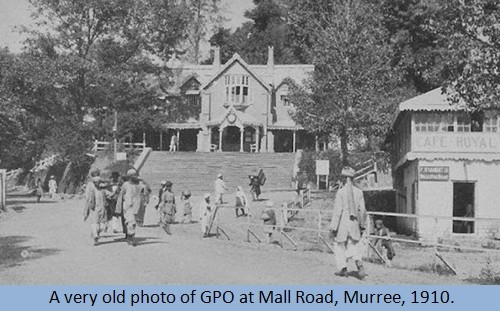
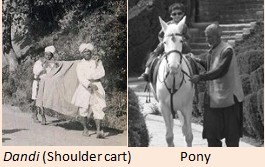
After the GPO, you had to go by foot, or by rickshaws drawn by men, or by dandi (shoulder cart). There were many ponies with their owners, who used to take you around on their ponies. If there was a child, the saddle was with a ring. Kashmiris or the local villagers used to carry your baggage to your bungalow.
Murree was located at a height of about 7,300 feet. From the oppressive heat of Rawalpindi to Murree with pine trees all around was a very healthy environment. We then would go to Kashmir Point, to our hired bungalow, on the pony with a ring saddle.
In Murree, sometimes we saw a film in a cinema house near the GPO. There were various parties from other parts of the country coming to Murree to spend the season. From Pindi Point in Murree, you could see the lights of Rawalpindi.
In Pindi, our cook was a Kashmiri from Poonch. Our chowkidar (watchman) was a Gurkha, about 6 ft. 6 inches tall, ex Wartime Soldier\; he walked with a limp. Our Gawala (milkman) was a handsome Muslim, and our Maali (gardener) was a bhaiya (from North India - U.P. or Bihar)
On Saidpur Road, during winter, some karanchi walas (cart) used to come and offer wood for cooking. My mother used to bargain with them, and then buy two Karanchi loads. Our servants used to put the wood in special storage rooms for balan (firewood). She also used to take one karanchi load of bhoosa (hay) for our animals. In winter, these karanchis used to come from Saidpur side heavily loaded with hay, at night. We urchins used to pull out hay from the rear while the karanchis were sleeping. Thereby, collecting a lot of hay for the Kashmiri labour to enjoy the fire.
Two sons of Late Rai Bahadur Boota Singh from his first wife, Sardar Harnam Singh and Sardar Jaidev Singh, lived in Pindi. Both were friends of my father and close relations. Sardar Harnam Singh had one son and three daughters. My father got these daughters married to his cousins, and the son married in Abbottabad to Sardar Lakhmi Singh's daughter. He was a landlord and my father's close relative. He was very well respected in Abbottabad, as he owned a lot of property. He had two sons and a daughter. I had attended his daughter's wedding as a 5-year-old, but I don't remember a thing of Abbottabad. Sardar Lakhmi Singh passed away soon after the marriage.
Sardar Lakhmi Singh's second son, Harinder, started an amazing love story. I will have to digress from Pindi to Abbottabad to narrate it.
Harinder, a very handsome, tall, brown-eyed son of Sardar Lakhmi Singh, fell deeply in love with a Muslim girl from an influential Abbottabad family. They decided to elope but Harinder backed out. This news was conveyed to her father. Like a true father, he admonished them, and asked Harinder if he would convert to Islam to marry his daughter\; otherwise, he would kill his daughter. At that moment, blind love drove Harinder to say YES.
No other member in either family knew this. Harinder, as a Sikh started observing Roza (Fast) during Ramzan. He was my elder brother's friend and our relative, and stayed upstairs with my brother in Pindi. Harinder had a small moustache and a small beard. One day, as he was dressing up after applying wax to his moustache to twirl, one part came off. It looked very funny to me - a 14-year old boy - so I started laughing. Harinder shouted at the top of his voice, "Get out and run away, oye khanzeer (O Swine)!" I ran away as fast as I could.
After the Partition, we moved to Mussoorie, India. Harinder moved to Delhi. In Karachi and Delhi, something was cooking up to unite this couple. The girl along with her parents moved to Karachi (then capital of Pakistan) to get Harinder back to Pakistan by completing the required formalities without anybody's knowledge. Harinder's mother and other family members had no knowledge of his intention to marry and settle in Pakistan. I am sure some phone calls or letters must have been exchanged.
On the appointed day in 1948, Harinder flew from Delhi to Bombay, and the girl from Karachi to Bombay. Their marriage was solemnized as per Muslim custom. He took the name Salah-Ud-Din Iqbal. They stayed in Bombay for two days, flew to Karachi, and then moved to Abbottabad. They later came to India several times and visited us in Amritsar, Chandigarh and Delhi. We are told that the Pakistan Government had restored Harinder's share of property to him.
The couple lived happily ever after. They had no children. I am told they both passed away one after the other a few years ago, and are buried next to each other. May their souls find beautiful shelter in our maker's blissful garden for a couple so deeply in love to break all man-made barriers.
______________________________________
© Kanwarjit SIngh Malik 2015
Comments
Sharing memories
Add new comment